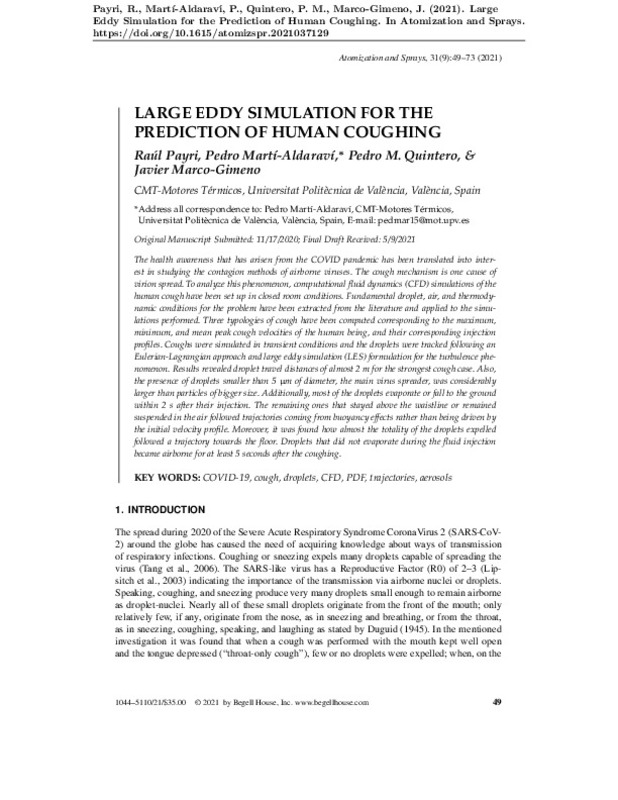JavaScript is disabled for your browser. Some features of this site may not work without it.
Buscar en RiuNet
Listar
Mi cuenta
Estadísticas
Ayuda RiuNet
Admin. UPV
LARGE EDDY SIMULATION FOR THE PREDICTION OF HUMAN COUGHING
Mostrar el registro completo del ítem
Payri, R.; Marti-Aldaravi, P.; Quintero-Igeño, P.; Marco-Gimeno, J. (2021). LARGE EDDY SIMULATION FOR THE PREDICTION OF HUMAN COUGHING. Atomization and Sprays. 31(9):49-73. https://doi.org/10.1615/AtomizSpr.2021037129
Por favor, use este identificador para citar o enlazar este ítem: http://hdl.handle.net/10251/183127
Ficheros en el ítem
Metadatos del ítem
| Título: | LARGE EDDY SIMULATION FOR THE PREDICTION OF HUMAN COUGHING | |
| Autor: | ||
| Entidad UPV: |
|
|
| Fecha difusión: |
|
|
| Resumen: |
[EN] The health awareness that has arisen from the COVID pandemic has been translated into interest in studying the contagion methods of airborne viruses. The cough mechanism is one cause of virion spread. To analyze this ...[+]
|
|
| Palabras clave: |
|
|
| Derechos de uso: | Reserva de todos los derechos | |
| Fuente: |
|
|
| DOI: |
|
|
| Editorial: |
|
|
| Versión del editor: | https://doi.org/10.1615/AtomizSpr.2021037129 | |
| Coste APC: |
|
|
| Código del Proyecto: |
|
|
| Agradecimientos: |
The equipment and resources used in this work have been partially supported by "Conselleria d'Educacio, Investigacio, Cultura y Esport" of Generalitat Valenciana in the framework of the "Ajudes per a grups d'investigacio ...[+]
|
|
| Tipo: |
|









